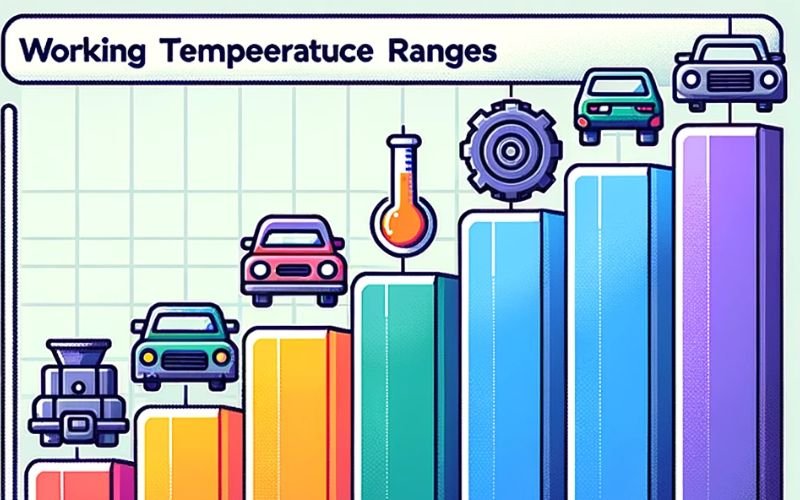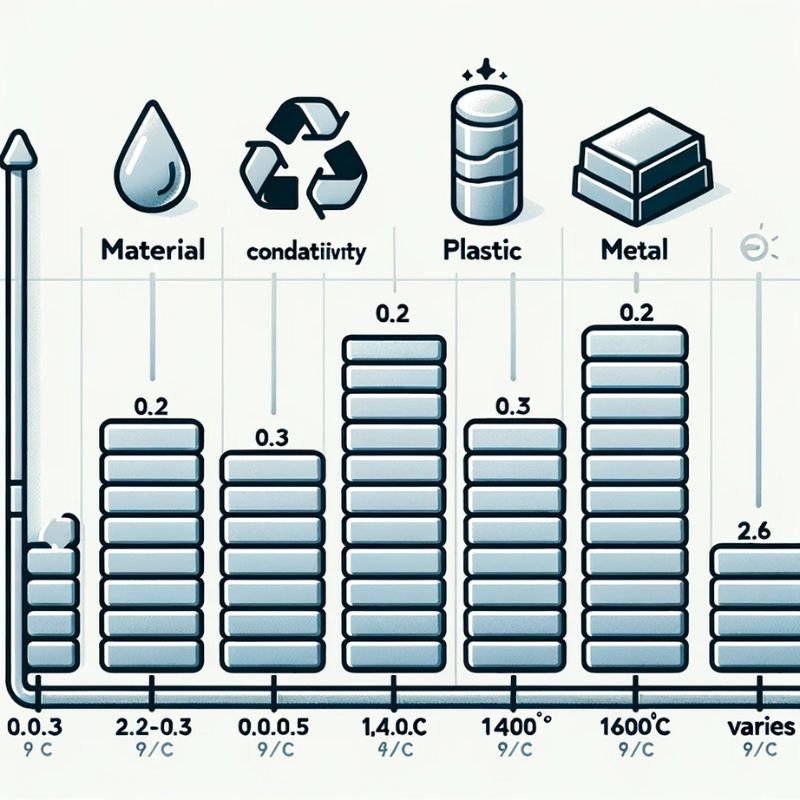Introduction
Silicone, a versatile material widely employed in industries such as automotive, food, electronics, and more, is celebrated for its exceptional thermal stability. In contrast to conventional plastics, silicone maintains its structural integrity even under high temperatures. This distinctive characteristic has significant practical implications, prompting engineers and professionals to delve into silicone’s thermal behavior to meet the demands of modern applications. Understanding silicone’s melting temperature is paramount, unlocking its industrial potential.
Does Silicone Melt?
The response of silicone to high temperatures is intriguing. Unlike typical plastics that melt when heated, silicone remains solid. However, as temperatures exceed 200°C, silicone gradually becomes more brittle and loses its mechanical strength. It does not melt; instead, it undergoes a transformation that combines resilience and adaptability, qualities not commonly found in other materials. This unique behavior is attributed to silicone’s molecular structure, particularly its robust siloxane backbone, which enables it to excel in extreme heat. A thorough understanding of this property is essential for industries seeking to leverage silicone’s thermal advantages effectively.
Melting Temperature of Silicone Rubber
| Temperature Range | Behavior |
|---|---|
| Up to 150°C (302°F) | Silicone remains unchanged under continuous heating. |
| 150°C – 200°C (302°F – 392°F) | Silicone begins to lose elasticity and hardens over time. |
| 200°C – 300°C (392°F – 572°F) | Silicone becomes harder but remains unmelted. |
| Above 300°C (572°F) | Exact behavior may vary depending on grade and composition. |
- The melting temperature of silicone rubber spans from approximately 1000°F (537.778°C) to 2577.2°F (1414°C), highlighting its ability to withstand extreme temperatures.
- Silicone exhibits resilience even in cryogenic applications, maintaining its properties at temperatures as low as -60°C (-76°F).
- The precise melting temperature behavior can vary depending on the specific grade and composition of the silicone, underscoring the importance of accurate selection to meet application-specific thermal requirements.

Working Temperature for Different Grades of Silicone
| Silicone Grade | Working Temperature Range | Key Applications |
|---|---|---|
| High-Temperature | Excelling in high-temperature settings and retaining mechanical properties. | Aerospace Components, Engine Seals, Industrial Equipment |
| Low-Temperature | Designed for low-temperature resilience, providing flexibility and performance. | Cold-Storage Applications, Automotive Components, Outdoor Electronics |
| Specialty Grades | Tailored for specific applications, offering unique thermal characteristics. | Medical Devices, Food and Beverage Processing, Electronic Encapsulation |
- Different grades of silicone are engineered for specific working temperature ranges and applications.
- High-temperature grades excel in extreme heat environments, making them ideal for aerospace and industrial equipment.
- Low-temperature grades are designed for cold-storage and automotive applications, offering flexibility in freezing conditions.
- Specialty grades cater to unique needs, finding use in medical devices, food processing, and electronic encapsulation.
- The ability to select the right silicone grade is essential for industries to meet their thermal requirements and enhance application performance.
Silicone Thermal Conductivity
Silicone’s thermal conductivity is a remarkable feature that underscores its versatility. Its ability to act as a thermal insulator is crucial in applications requiring temperature regulation. Unlike metals, which conduct heat rapidly, silicone offers moderated thermal conductance, acting as a buffer against temperature fluctuations. This characteristic is particularly beneficial in electronic applications where silicone serves as a heat dissipater, protecting sensitive components from thermal damage. Delving into the molecular realm, the siloxane backbone of silicone plays a pivotal role in its thermal behavior, providing stability and making silicone a valuable material for managing heat, a trait indispensable in various industrial applications.
Factors Affecting Silicone’s Melting Temperature
- Molecular Structure: Silicone’s unique molecular structure, including its siloxane backbone with high bond energy, plays a significant role in its melting temperature behavior.
- Grade: Different silicone grades and compositions can have varying melting temperatures, adding complexity to material selection for specific applications.
- Additives: The presence of additives, such as reinforcing fillers and thermal stabilizers, can enhance silicone’s thermal stability and influence its melting point.
- Processing Methods: Various manufacturing processes may impact silicone’s thermal behavior, making it crucial to consider the production method used.
Understanding these influencing factors is essential for industries as it enables precise control of silicone’s performance under different thermal conditions, ensuring it meets the rigorous demands of specific applications.
Measure Silicone Rubber Melting Temperature Range
Accurately measuring the melting temperature range of silicone rubber is a technical endeavor underpinned by precise methodologies. Techniques such as Differential Scanning Calorimetry (DSC) and Thermogravimetric Analysis (TGA) are employed to unveil the thermal characteristics of silicone. These measurements are imperative, laying the foundation for its application across various industries. By discerning the melting temperature range, industries are better poised to harness the thermal benefits of silicone rubber, ensuring it aligns with the rigorous demands of modern-day applications, and propelling innovations in a realm where temperature often dictates the rules of engagement.
Importance of Controlling Melting Temperature
Controlling the melting temperature of silicone is paramount in ensuring optimal performance across diverse applications. In automotive applications, for instance, silicone components must withstand high engine temperatures without compromising their functionality. Similarly, in the food industry, silicone utensils must retain their integrity even when exposed to high cooking temperatures. The ability to control and predict the melting temperature of silicone empowers industries to tailor solutions, ensuring safety, efficacy, and performance are not compromised. This control is a testament to silicone’s versatility, cementing its place in the arsenal of materials suited for challenging thermal environments.
Methods to Control Silicone’s Melting Temperature
- Material Composition: Adjusting the composition of silicone by adding or modifying components can impact its melting temperature. This method allows for customization to meet specific application requirements.
- Processing Techniques: Employing specific processing methods during manufacturing can influence silicone’s thermal behavior. This includes factors such as curing time, temperature, and pressure.
- Thermal Stabilizers: The use of thermal stabilizers, either as additives or coatings, can help control and enhance silicone’s resistance to high temperatures. These stabilizers play a crucial role in tailoring silicone for specific thermal demands.
- Innovation in Material Science: Ongoing research and development in material science continue to uncover new ways to control silicone’s melting temperature. Innovations in this field drive the adaptation of silicone for diverse and demanding thermal applications.
By utilizing these methods, industries have the capability to not only resist heat but also harness silicone’s thermal properties to meet the precise demands of their applications, fostering innovation in the use of this remarkable material.

Comparison of Silicone with Other Materials
Silicone is a versatile material known for its unique thermal properties. Let’s compare silicone with two other common materials, plastic and metal, in terms of thermal conductivity and melting point:
| Material | Thermal Conductivity (W/m·K) | Melting Point (°C) |
|---|---|---|
| Silicone | 0.2 – 0.3 | 1400 – 1600 |
| Plastic | 0.1 – 0.5 | Varies |
| Metal | Varies | Varies |
- Thermal Conductivity: Silicone exhibits a moderate thermal conductivity of 0.2 – 0.3 W/m·K, making it suitable for applications where temperature insulation is required.
- Melting Point: Silicone has a high melting point ranging from 1400°C to 1600°C, providing excellent resistance to high temperatures.
- Plastic: Plastics generally have lower thermal conductivity than silicone, ranging from 0.1 to 0.5 W/m·K. Plastic materials also vary in melting points depending on their composition.
- Metal: Metals have varying thermal conductivities, typically higher than silicone. Metal melting points vary widely based on the specific metal used.
This comparison highlights silicone’s balanced thermal performance, making it a preferred choice in applications demanding thermal resilience and insulation.
Applications Impacted by Silicone’s Melting Temperature
- Automotive Seals: Silicone’s melting temperature is crucial for automotive seals, allowing them to endure high engine temperatures without compromising their functionality.
- Kitchen Utensils: In the food industry, silicone utensils must retain their integrity even when exposed to high cooking temperatures. Controlling silicone’s melting temperature is essential for ensuring their performance.
- Electronics Encapsulation: Silicone’s thermal properties make it valuable in electronic applications, where it serves as a protective enclosure for sensitive components, shielding them from thermal damage.
- Industrial Components: Various industrial components, such as gaskets and seals, benefit from silicone’s ability to withstand extreme temperatures, ensuring their reliability and longevity.
Understanding the impact of silicone’s melting temperature is vital in designing tailored solutions that not only meet but exceed the demanding thermal requirements of contemporary applications. Each application serves as evidence of silicone’s thermal resilience and its practical significance in real-world scenarios.

Industry Standards for Silicone’s Thermal Properties
- Quality and Safety Benchmark: Adhering to industry standards is not just a practice; it’s a commitment to maintaining the highest levels of quality and safety in silicone-based solutions.
- Precision and Consistency: These meticulously crafted standards define precise thermal thresholds that silicone must meet. This ensures that silicone’s performance remains reliable and consistent across diverse applications.
- Trust and Reliability: Compliance with these standards builds trust. It assures clients, customers, and partners that silicone solutions are of the utmost quality, reinforcing the reliability of these materials.
- Cultural Excellence: These standards foster a culture of excellence within industries that rely on silicone. They emphasize the importance of precision, reliability, and safety in utilizing silicone across various thermal environments.
Adhering to these industry standards ensures the quality, reliability, and safety of silicone-based solutions in thermal applications.
Innovations in Enhancing Silicone’s Thermal Stability
The pursuit of enhancing silicone’s thermal stability has ignited a wave of innovations. From the incorporation of novel additives to the advent of advanced processing techniques, the field of silicone’s thermal stability is in a constant state of evolution. These advancements are not mere scientific endeavors but instrumental in paving the way for new applications and improving existing ones. By pushing the boundaries of silicone’s thermal stability, industries are better positioned to meet the ever-increasing demands of modern applications, ensuring silicone continues to be a reliable choice in a thermally demanding landscape.
Case Studies
Exploring real-world scenarios provides tangible insights into the impact of understanding and controlling silicone’s melting temperature. Various case studies, spanning sectors from automotive to electronics, illuminate the practical implications of silicone’s thermal properties. Each case study serves as a testament to silicone’s thermal resilience, showcasing how industries navigate thermal challenges by leveraging the unique properties of silicone. This journey from theoretical understanding to practical application underscores the indispensable role of silicone in tackling real-world thermal dilemmas, propelling industries forward in the thermal domain, and illuminating the path of innovation illuminated by the flames of knowledge.
Conclusion
Silicone’s thermal narrative is a tale of resilience, adaptability, and innovation. Understanding its melting temperature and the myriad factors influencing it is more than an academic endeavor—it’s a practical necessity for industries aiming to harness silicone’s thermal prowess. Through a blend of theory, real-world applications, and a glimpse into future innovations, the narrative of silicone’s thermal journey is both enlightening and empowering. It showcases a material that not only withstands the thermal test but thrives in it, carving a niche for itself in a world where temperature often dictates the rules of engagement.